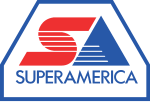St. Paul Minnesota Temple
2000 establishments in Minnesota20th-century Latter Day Saint temples in the United StatesBuildings and structures in Washington County, MinnesotaLocation maps with marks outside map and outside parameter not setTemples (LDS Church) completed in 2000 ... and 2 more
Temples (LDS Church) in MinnesotaUse mdy dates from September 2017

The St. Paul Minnesota Temple is the 69th operating temple of the Church of Jesus Christ of Latter-day Saints (LDS Church). It is located in Oakdale, Minnesota, United States, a suburb of St. Paul, Minnesota, and is the first temple of the LDS Church to be built in the state. The site of the St. Paul Minnesota Temple is also the site of a stake center, a larger meetinghouse for the members of the LDS Church. The temple is situated on a wooded 7.5-acre (3.0 ha) site. The building itself features a single spire and is covered with a light gray granite veneer.
Excerpt from the Wikipedia article St. Paul Minnesota Temple (License: CC BY-SA 3.0, Authors, Images).St. Paul Minnesota Temple
Hadley Avenue North,
Geographical coordinates (GPS) Address Nearby Places Show on map
Geographical coordinates (GPS)
| Latitude | Longitude |
|---|---|
| N 44.980260997222 ° | E -92.965198997222 ° |
Address
St Paul Minnesota LDS Temple
Hadley Avenue North 2150
55128
Minnesota, United States
Open on Google Maps






